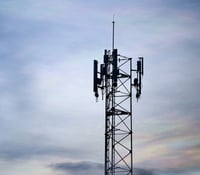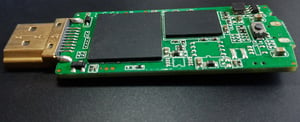What is a Signal Converter?
 A signal converter is a device that converts signals from sensors to industrial current signals, converts analog input signals to analog output signals, normalize signals, or isolates signals. There are multiple types of signal converters; Analog-to-digital converters (ADCs), digital-to-analog converters (DACs), frequency converters or translators, voltage converters, frequency-to-voltage converters, voltage-to-frequency converters, current-to-voltage converters, current loop converters, charge converters.
A signal converter is a device that converts signals from sensors to industrial current signals, converts analog input signals to analog output signals, normalize signals, or isolates signals. There are multiple types of signal converters; Analog-to-digital converters (ADCs), digital-to-analog converters (DACs), frequency converters or translators, voltage converters, frequency-to-voltage converters, voltage-to-frequency converters, current-to-voltage converters, current loop converters, charge converters.
Each of those types of converters have a different ability. For example, an analog-to-digital converter sample analog signals and convert them to a series of digital values. Digital-to-analog converters convert digital numbers into corresponding voltage or current levels. Frequency converters or translators convert or scale input frequencies to specific output frequencies. Though each type has their differences, each have a similar goal in mind, which is to receive one type of signal and output another type of signal.
 Resolution is a key factor to signal converters. Resolution for signal converters is what provides the data. It is what identifies the number of values it can produce over the range of analog values. The better resolution the converter provides the more accurate the data will be.
Resolution is a key factor to signal converters. Resolution for signal converters is what provides the data. It is what identifies the number of values it can produce over the range of analog values. The better resolution the converter provides the more accurate the data will be.
Another way of differentiating between converters is by their specifications. Performance specifications for signal converters differ between the type, but they include channel specifications, accuracy, resolution, signal specifications, mounting options, and the user interface.
Input channel specifications can be separated into analog signals, single-end inputs, differential channels, and digital signals. Accuracy for signal converters is defined as the difference between the true value and the indication expressed as percent of the span. Static accuracy is the combined effects of Linearity, Hysteresis, and Repeatability.
 The input signal can have a variety of specifications as it enters the converter. The type of converter selected depends largely on the type of input signal from the system and the desired output signal. The input signal could have properties such as; DC, AC, frequency, and charge.
The input signal can have a variety of specifications as it enters the converter. The type of converter selected depends largely on the type of input signal from the system and the desired output signal. The input signal could have properties such as; DC, AC, frequency, and charge.
In terms of user interfaces, signal converters have several user interfaces available that allow the user to adjust the system. User interface types include the following: front panel, computer programmable, touch screen, remote and handheld devices, or no interface at all.
Industries that use signal converters are numerous. If an industry requires important information on variables like temperature and pressure, signal converters are likely utilized. Examples of industries that use signal converters include, water and wastewater management, mining, and power.
For more information about how Radwell can assist you with your signal converter needs and repairs, visit Radwell.com


